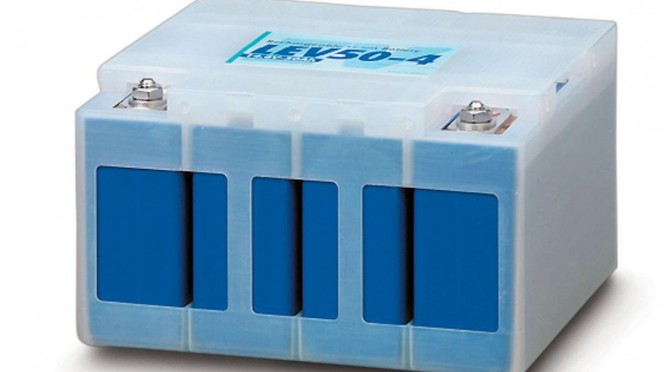A recent study has assessed some of the environmental impacts of the production of batteries used with low carbon systems, such as photovoltaic cells and wind energy.
The results indicate that lithium-based batteries have the most significant impact, in terms of metal depletion and greenhouse gas (GHG) emissions, but more complete data are needed on possible toxic impacts to conduct a full comparison between batteries.
The study evaluated the environmental and energy impacts of battery production based on available data from previous research. The use and disposal stages of a battery’s life cycle were not considered as part of this study, although life cycle assessment (LCA) methodology was used to determine production’s impacts. The research focused on five types of battery: lead-acid, lithium-ion, nickel-cadmium, nickel-metal-hydride and sodium-sulphur, and considered various environmental impacts including metal depletion, climate change impacts and energy demand.
Toxicity
Lithium-ion batteries had the largest impact on metal depletion, specifically of lithium which is used in the battery itself. Although there is no immediate shortage of lithium, its continued use needs to be monitored, especially as lithium mining’s toxicity and location in places of natural beauty can cause significant environmental, health and social impacts. However, it is estimated that per MegaJoule (MJ) of capacity, lithium-ion batteries are about half as toxic to humans as lead-acid batteries, and less toxic than nickel-cadmium batteries. Nickel-metal hydride and sodium-sulphur batteries are the least toxic to humans.
Energy for production
The batteries that require the most energy for their production are nickel-metal-hydride, at 90 MegaJoules (MJ) per kilogram (kg) of battery produced and lithium-ion, at 88-90 MJ per kg. This is reflected in their impact on fossil fuel depletion, with both lithium-ion and nickel-metal-hydride using around 1.6 kg of oil equivalent per kg of battery produced. These two batteries also perform the worst in terms of GHG emissions, with up to 12.5 kg of CO2 equivalent emitted for each kg of lithium-ion batteries, and 5.3 kg of CO2 equivalent for each kg of nickel-metal-hydride batteries. The sodium-sulphur and lead-acid batteries performed the best in terms of energy requirements and GHG emissions, although some data were not available for the sodium-sulphur batteries.
Environmental impacts
The results indicate that the production of lithium-ion and nickel-metal-hydride batteries use the most energy and produce the most GHG emissions. However, there are limitations to the data and for a full understanding of life cycle impacts, further aspects of battery use need to be considered, such as length of usage, performance at different temperatures, and ability to discharge quickly. The environmental impact of the battery disposal is another important aspect and there may be health safety issues for those who recycle batteries. Lead-acid and nickel-cadmium batteries appear to be most concerning in terms of human toxicity and more data are needed on the toxic impacts of the different batteries at different stages of their life cycle, both on human health and wildlife.
The study provides an informative database of materials used in battery production alongside some aspects of environmental impact but more data would be required for a full comparison.
Original source: McManus, M.C. (2012) Environmental consequences of the use of batteries in low carbon systems: The impact of battery production. Applied Energy. 93: 288-295. Doi:10.1016/j.apenergy.2011.12.062.


